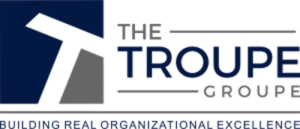S
Suppose a team has an urgent problem–a complex and unwieldy problem–that needs a breakthrough. We have learned that there are ways to foster breakthroughs (See https://www.amazon.com/Net-Butterfly-Practice-Breakthrough-Thinking/dp/1591847192/ref=sr_1_1?ie=UTF8&qid=1532643421&sr=8-1&keywords=the+net+and+the+butterfly) and we know that experiential learning creates a greater level of trust and cooperation in a group. So, if we combine experiential learning with action learning, we might well have a recipe for outstanding solutions. Here’s how it works:
Bring together a diverse group of 8 to 10 people who are chartered with solving a particular, nasty problem. Spend some time formulating a problem statement. Next, generate some dialogue about the urgency of the problem and what it would mean to the organization or team members to have a solution.
The next step can be done at a ropes course or the ropes course elements can come to you. Contact the Waterhouse Center (www.waterhousecenter.com) to arrange the details. While experiencing the various activities of a ropes course, the participants’ brains are busy making connections to the problem that was earlier stated. Without even knowing it, creativity is engaged and ideas are being formed. Truly, breakthroughs are in gestation.
After a few hours of experiential learning, the group will sit down with a coach to conduct an action learning session. In action learning, the coach helps ensure that learning is maximized and that the problem, the real problem, is explored and solved. The coach establishes guidance for the group, moving it from divergent thinking to convergent thinking, and emphasizing that the powerful routine of asking questions is the predominant form of interaction. (See https://www.amazon.com/Leading-Questions-Leaders-Solutions-Knowing/dp/1118658132/ref=sr_1_1?s=books&ie=UTF8&qid=1532642024&sr=1-1&keywords=marquardt+questions and www.wial-usa.org). An additional benefit of action learning is that the team members get the opportunity to develop their leadership skills–and this learning is made clear through reflection at the end of the session. At the end of the action learning session, significant solutions are identified or progress toward a solution is made.
The process of priming the brain with a problem to solve, using experiential activities to allow for creative connections, and adopting the powerful method of action learning can produce robust, effective solutions for today’s organizations.
@michaelmarquardt #wial #actionlearning #waterhousecenter #experientiallearning @OliviaFoxCabane




